 By : Mangku Purnomo
By : Mangku Purnomo
1. Why Households?
Household refers to the group of co-resident, people who live under the same roof and typically share in common consumption. Households are not simply the product of residence rules but are also affected by demographic, life course, and political economic factors[1]. On the field of household behaviour, the systematic wide range research in social science conducted by CHAYANOV in WALKER ET., AL., (2002:170) who observed that peasant households held farms of different sizes with varying levels of surplus production in which each stage in household life circle has different labour-consumer balance. He noted that mode of household economy (peasant) was different with the logic of capitalist economy. Recently, this assumption was refused because the basic assumption that the demand of labour in household economic system relative static has no consideration in the integrated market system[2].
According to the Dictionary of Anthropology (THOMAS BARFIELD, 1997:245), household is the economics unit base on common resident. Membership comprises a family or domestic groups that also may include hired labourers, and domestic servants. As a social unit, members and household have relationship with the extra-household environment. Between the members of household divided in different role that shape the mode of relationship each others. Recently, household definition broad beyond conventional term to capture for overlapping social groupings, including family or other members who may be physically dispersed but socially interdependent as a nature of industrial society. Household also has connection with the market system in their product and labour. The household remains a useful unit of analysis, although this term should be flexible enough to include a variety of different family forms and differently related, as well as non-related, members. It should also be flexible enough to take into account of the different interests as well as individual strategies of its members and should not assume that the household strategy is based upon consensus.
Household in sociology viewpoint divided on two categories that are nuclear and extended family. In the developing countries in particularly rural communities extended families are more common than nuclear families. Extended family is the basic unit and traditional family structure where adults, children, and kinship living in the same roof. The extended family may live together for many reasons, help raise children, support for an ill relative, or help with financial problems. Sometimes children are raised by their grandparents when their biological parents have died or no longer can take care of them. In the rural area when the resources especially land are abundant, demand of children are high for serving labours in agriculture production. Recently, in the light with improving industrialization, the numbers of extended families decrease rapidly (JONES, 2002, in ROBINSON and BESSELL, 2002: 229-230)[3].
In the other hand, nuclear household family is the basic unit and modern family structure where father and mother and their children without other kinship or servant co-resident in the same unit economy activities. Recently, children are not only descent relationship but also adoption relationship. Nuclear families ware believed as impact of industrialization process in which nuclear families more adaptive with the production process. All of household members served labour for the industrial system, so the traditional role that embedded in the extended household family such as child care and domestic work must be changed. On the post industrialist society, transforming from extended to nuclear family has critics that based on individualism and post modernism paradigm in which household more variety in reality (POPENOE, 1988)[4]. In this research I use nuclear family household (refer to household which based on nuclear family) and extended family household (refer to household which based on extended family) as KERZER´S term in his article on Household history and sociological theory.
To analysis the household strategies in developing countries in particularly
Additionally, source of local power was not come from the level of household wealth. It means rich people can not make use their wealth to control social structure as common rural area in
2. An Analytical Frame Works of Household Strategies
The idea of household strategies has perennially resurfaced as a concept, a method of analysis and a unit of analysis in studying social life in different parts of the world (WALLACE, 2002). It relevant because of three factors that are: (1) The more women enter into the labour force, the more household strategies are likely to become more important because household must reallocated tasks to the different household and/or family members, (2) In the rapid social change, household are forced to become reflexive and draw upon different resources in order both to thrive and to survive, and (3) Where large parts of the economy are informal or becoming informal, households have to draw upon a range of resources both within and outside the household in order to manage their economic and social reproduction. The last condition is commonly in developing countries signed by process of agrarian transition in which farmers in face of many opportunities in side and outside farming system.
The household is my main analytic unit in order to explain the people's real-life economy and give deep explanation a bout how and why the natural resources scarcity appears base on poor households perspective and what and how certain strategy chosen by household to secure their live in face of resources scarcity. Household strategies are a concept that based on the motivations and agency of actors in society to capture the social base dimension of economic behaviour through looking at the intersection of different economies in household behaviour and as a unit of analysis, with a focus on households rather than individuals (WALLACE, 2002). In this respect, my analysis will be focused on the local perspective of causes and process of resources scarcity and explanation household strategies in that condition.
As a unit analysis, WALLACE (2002:281) noted that household remains a useful unit of analysis, although this term should be flexible enough to include a variety of different family forms and differently related, as well as non-related, members. It mean household not only base on descent membership but also by other reason. Household analysis also answers the former critics in which analysis of household tend to simplify in the family that based on descent relationship. In my strategy of analysis, although households are a main unit of analysis, individual also contribute to the intra household relationship in order to create fever strategies in face of scarcity. To get no doubt interpretation, I assume the families in the research area are dominated by standard household even though the number of non-standard family and non-family households may be increasing.
Strategy in the other hand is conceived as a plan of how one would behave in all the different decision situations that might occur during the certain condition. Household strategies are those implicit principles that guide household members when seeking household goods, whether of survival or social mobility. This suggests that people can choose, and choices make a difference, despite the economic or social constraints they face. Originally, the concept of strategy has been borrowed from the military and adapted for use in sociology, business, politic, and others subjects. Strategy connoted with the plan of action, goal, tactic, and choice that arrange by individual or groups. CROW (1989) noted that the term of strategy as a concept has applications well beyond the traditional term. It has been encouraged by neighbouring disciplines such as anthropology, economics, philosophy, and political science.
Because strategies are related with the set of choices, it also involves same exercise of power as a consequence of the nature of choice action. MANN (1987 in the CROW, 1989:3) noted that where one strategy is pursued in preference to another, the choice may have involved same some exercise of power, something implicit in the use of term such as ruling class strategies. For example, SAMIN Community in Java offered passive movement (they refused to pay the individual tax without violence) to the government to avoid military pressure (RICKLEFS and WAHONO, 2005:349-350)[5].
In the household, exercise of power appears when they earn or claim resources included the influx of material goods, education, government program, or others opportunity when they must negotiate with society. Certain strategies often sophisticated when it was in face of other strategies that developed by others actors. SCOTT (2004) identify that low class farmers did not against land lords directly to get resources from them, but they damage plant or works slowly as a pattern of resistance. To articulate their resistance in face of the power full opponents, low class farmers avoided direct action. It is form of farmer resistance as a common pattern in south East Asian peasantry.
Not only exercise of power, concept of strategy also has been used at many level of society such as society as a whole, institutions such as government, education, and religion, groups, and individual. Household has relevance as a strategy of analysis because of the weakness studies that used by survey did not adequate to capture the more detail and informative about the pattern of relationship and mode of power exercise between parties on society. It also answer when informal sector as strategy of analysis is difficult to study using conventional methods of analysis, such as surveys and secondary sources, it means that sociologists have had to look in more detail at the practices of households and at the way in which economic relationships are socially embedded (GRANOVETTER, 1985, in WALLACE 2002:279).
Poor household strategies not only depend on structural aspects such as value and norm but also their capabilities to transform resources become useful for their economy. Capabilities poor households affected their bargaining power with other parties in society who occupied resources such as landlords, government, local industries, and others. It also influences their means of negotiation strategies in face of value and norm the social conditions that produce poverty to maximize opportunities for their live. In light with above explanation, BEBBINGTON (1999) noted that the importance of the concept of strategy is that it is based upon the assumption that one must ask households or individuals themselves what they are doing in order to understand how they make sense of their own environment[6].
Household analysis also involves the live circle of poor household in order to depict the process of impoverishing from generation to generation. Historical perspective gives clear illustration about the process how poor households depend their resources occupation in certain event in their household life circle. Household circle analysis also gives important information about household decision making. In many literatures, heritage system in
In fact, household has many strategies to secure their economy such as change the domestic work division[8] (SILVER, 1993, ESTES, 2005, VANDEWEYER, 2007), re-arrange intra-resources allocation including consumption and investment (FRANKENBERG, ET AL., 1999, DUFLO and URDI, 2008) time allocation (ILAHI, 2000), family size (MILLIMET, D.L., 2000), diversification to non farm income (BEBBINGTON, A., 1999, BARRETT, ET, AL., 2001), include in labour market via gender (SMITH, ET, AL., 2002, HYMAN ET, AL, 2005, JANE GRAY, 2006,) , migration (SILVEY, 2001), access to common resources (SUNDERLIN, 1997, CARR, 2005, SCWARZE, ET, AL., 2007, VANWEY, 2007) access rural-urban commercial market (EVERS and MEHMET, 1994), access to government program (RIEDINGER, 1994, ALDERMAN and LAVY 1996, ILO, 2006, LANJOUW ET, AL, 2001, Fernando, 2007) and social obligation (NARAYAN, 1999, BUTTERFILL, 2004), and child labour(BEEGLE, ET, AL, 2006, CAMERO, 2000, LORETTA, 2008).
Poor households can make use those opportunities depend on their capabilities to confront the social conditions that produce poverty (BEBBINGTON, 1999). He cited HABERMAS (1971) that was asset as vehicles for instrumental action (making a living), hermeneutic action (making living meaningful) and emancipation action (challenging the structures under which one makes a living). In society, poor households often access directly because of their low awareness. As a result, low-income households are substantially less likely to have access to institutions created by government to facilitate them to access financial resources (
According to the explanation above, I will use the household as a unit of analysis and strategies of analysis in which poor household in face of environmental changes choice several alternatives. An analysis also involves dynamic interaction and exercise of power that appeared between households, household and society, household and government, and among household members. Life circle analysis is also important in order to capture the process of how resources losing from generation to generation. Capabilities of household as an active social group to maximize opportunities are also important to give reason why poor household viable and not viable in face of environmental changes.
3. Household Strategies and Sustainable Development
Household is the vital component for promoting SD. Sutcliffe (2006) suggested involving changes individual behaviour as member of household to promote sustainable development (SD). Household, both as a unit of production and consumption will influence the supply of goods and services. For instant, in macro level, it is difficult to capture problem of the high paper consumption in the industrial countries that it enhances rapid deforestation in the tropical area without involving household both in producer and consumer countries. High passion of developing countries in tropical areas where rain forest laid to improve their economy benefit endorse household to include in the production chain. Poverty, low level of education and environment awareness in developing countries simplify damaging forest. In the other hand, high paper consumption as a pattern of household member behaviour in developed countries can not be changed easily. BARR (2003 in SUTCLIFFE, 2006) insist that public participation is important to address environmental problem in which he argue that strong sustainability cannot be implemented from above (SUTCLIFFE, 2006; 2).
SD as a concept was first formulated and promoted by World Commission on Environment and Development (WCED) in the popular term is “BRUNTLAND REPORT” as a reaction of the fault of development via modernization to increasing quality human kind around the worlds and environmental problem following it (WCED, 1987). That concept was created to address accelerating deterioration of the human environment and natural resources and the consequences of that deterioration for economic and social development Theories and practice of sustainable development have to be discussed and developed within a broad range of actors in different areas of society (Hull, 2008).
According to the WCED definition, SD is the new development approach that integrated different spheres of human activity in order improve their quality of live not only in current condition but also future generation through connecting social, economic, and environment in the one mutual relationship. Sustainable development approach involve the wide range of dimension (moral to practise), level or scale (local to global), and sphere (social, politic, and economy).
Basic principle of SD is to enhance humankind well being accompanied with environment conservation through improving mutual relationship between human activities and environment. HARTMUTH ET AL. (2008) exist that beyond the vagueness concept of SD they introduce three interdependent general sustainability goals that are (1) securing human existence, (2) maintaining society’s productive potential and (3) preserving society’s options for development and action. HULL (2008;79) exist vision of SD that are (1) be construed and implemented in an integrated fashion, and in relation to all spheres of human activity (be they political, economic or social), (2) be integrated with such widely accepted social and ethical ideals as equality, social justice, freedom and solidarity, (3) be articulated in an emotionally charged way, understandable to all and favouring the taking to heart of the values and content carried, (4) be propagated and programmed in line with a reduction of the disparities between the poor (hungry) and the rich (both globally and locally), this being first and foremost associated with people’s self limitation of their over-consumption, and , (5) be accompanied by the elimination of armed conflict and the threat of war, and hence by progress with disarmament (HULL, 2008).
As the development strategy SD has three fundamental goals and seven dimensions. The former are an ecological, economic, social and humanitarian goal (MACHOWSKI, 2003 in PAWŁOWSKI, 2008). The dimensions of SD PAWLOWSKI (2008) are the moral, ecological, social, economic and legal, technical, political dimension. These dimensions were captured on the hierarchal relationship. In the moral dimension SD has principle of “imperative of responsibility” that it refers to the existence of a future for humankind at all and the conditions prevailing in the future (and thereby to the quality of life). In ecological dimension, SD emphasize on the activities to conserve nature and the landscape in order to the shaping of spatial order. On social dimension, SD prompts awareness of co-existence of human and nature as a equal position in which they respect each other. On economic, al of economic activities must include the environment value-on business sphere as well as Gross Nation Product (GDP). In the technical dimension, al of technologies that produce to provide human being including manufacturing must ecological friendly. Then, in political dimension, government must initiative the environment friendly through incentive and legal support and they include the local people in decision making process in development in order to improve political awareness on the environmental issues.
At this point, PAWLOWSKI (2008) also divided dimensions of SD in the three hierarchal categories. The moral dimension as a highest dimension lies on first level. Than ecological, social, and economic dimension lie as second level. Finally legal, technical, and political dimension lie as a third level. That dimensions on the analysis are not separated because of interception each other. For instant, ecological dimension involve economical and political dimension when the cause of environment damage is political action. Interception that dimension will apparent particularly in policy planning and the implementation program. It means, in SD strategies, hierarchal relationships must be integrated in the strategy of analysis.
At this point, how to measure the role of household strategies in order to secure their economy promote or not promote sustainable development? According to the Ecological foot-printing analysis (EFA), it can be identified through measurement the aggregates a range of individual consumption and waste components and converts them into the bio-productive land area required to support this activity. It is the cyclical process in which energy and other good was consumed and produced in the same quantity in the one unit. This approach suggested society to limit their individual consumption in the certain level of environment capacity to support their proper live (Sutcliffe et al., 2006). Practically, the problem of environment degradation is more complex than individual support to live because it is a multidimensional problem involves many actors, cultural, political, economic, and so on.
Wide range of analysis also fault to capture the problem of environment problem even tend to generalized problem in the macro level that neglected the role of local evident (BARR, 2001, in SUTCLIFFE, 2006). In the other hand, the individual approach is not adequate to address that problem. According to the many ways of poor household strategies above, this research will impute kinds of household strategies with the SD principles, goals, dimension, and level of SD. This research will answer the main question in SD debate is that do the poor household strategies damage the natural resources?
[1] David I. Kertzer, 1991, Household history and Sociological theory, Annual review of sociology
[2] Robert Walker, Stephen Perz, Marcellus Caldas and Luiz Guilherme Teixeira Silva, Land Use and Land Cover Change in Forest Frontiers: The Role of Household Life Cycles, INTERNATIONAL REGIONAL SCIENCE REVIEW 25, 2: 169–199 (April 2002)
[3] Kathryn May Robinson and Sharon Bessell, 2002, Women in
[4] David Popenoe, 1988, Disturbing the Nest: Family Change and Decline in Modern Societies, Aldine Transaction.
[5] Merle Calvin Ricklefs and Satrio Wahono, 2005, Sejarah Indonesia
[6] ANTHONY BEBBINGTON, 1999, Capitals and Capabilities: A Framework for Analyzing Peasant Viability, Rural Livelihoods and Poverty, World Development Vol. 27, No. 12, pp. 2021-2044, 1999
[7] Geertz, Clifford, 1963, Agricultural Involution: The Processes of Ecological Change in
[8] Sarah Beth Estes, 2005, Work–Family Arrangements and Parenting: Are “Family-Friendly” Arrangements Related to Mothers' Involvement in Children's Lives?, Sociological perspective, Fall 2005, Vol. 48, No. 3, Pages 293–317

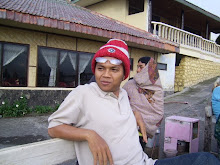
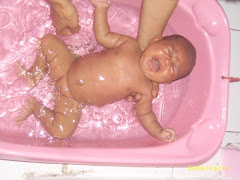





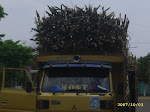





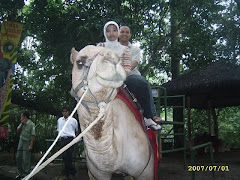


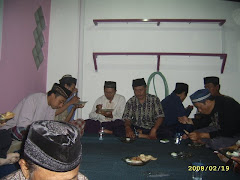


Tidak ada komentar:
Posting Komentar